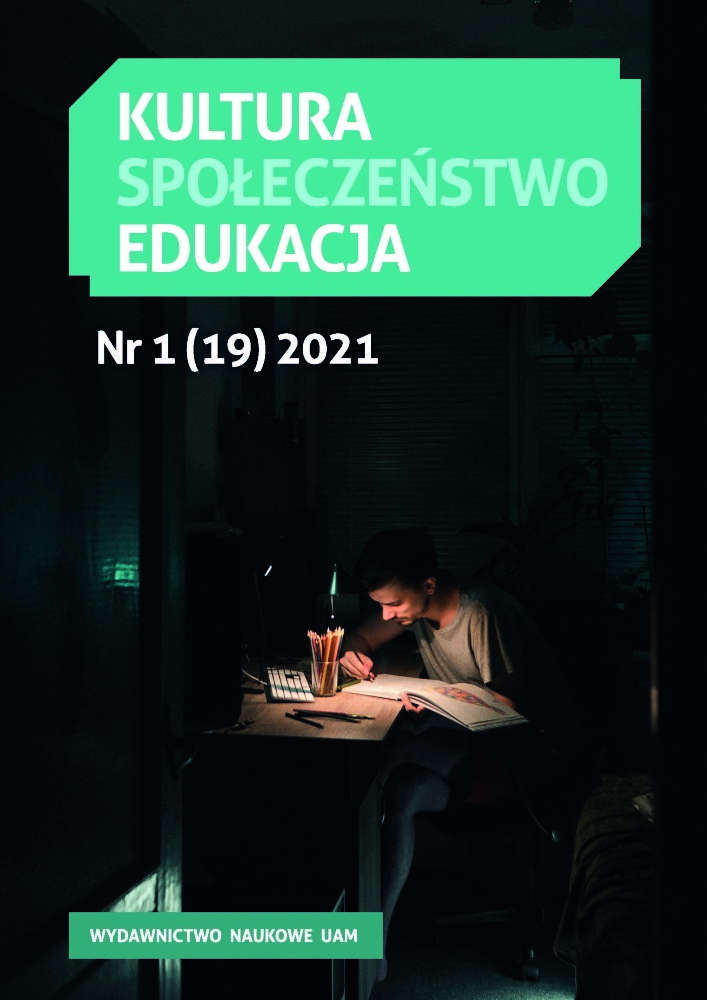Abstrakt
The article is one of several articles summarizing research carried out with a group of foreign students who come to Poland to participate in the Erasmus+ program. Method and research group: Research has been taking place since 2016 and is conducted using an interactive Google survey. The study group consists of 128 people aged 18 to 25 years. The respondents chose Poland, specifically the Maria Curie-Skłodowska University, in order to complete a semester or an academic year. This article will also present structured interviews that were conducted with foreign students. Aim of the study: To learn about the attitude of foreign students towards modern teaching methods (e-learning). An additional goal was to verify the knowledge regarding this method of education and to compare Poland with the respondents’ home countries. Results: The respondents come from European countries such as Spain, Portugal, Germany, France, as well as, Brazil
and India. Most of them appreciate the possibilities of e-learning (87%). Over half of the respondents (62%) say that in Poland distance learning was rather not implemented until 2020. What changed this situation was the coronavirus outbreak. In social sciences, they also appreciate the possibility of classes in the traditional form due to the possibility of participating in workshops and specialist training, or giving presentations.
Bibliografia
Abeles T.P. (2005), E-learning in the new university, E-mentor, 4, pp. 86–89.
Betlej P. (2009), E-learning w organizacji zajęć i opinii studentów – studium przypadku, E-mentor, 1(28), http://www.e-mentor.edu.pl/artykul/index/numer/28/id/615, accessed: 20.04.2021.
Cieślik J. (2006), E-learning, blended learning – wyzwania techniczne, organizacyjne czy bardziej kulturowe?, E-mentor, 4(16), pp. 20–24.
Dąbrowski M. (2013), E-learning w szkolnictwie wyższym, Studia BAS, 3(35), pp. 203–212.
Drążek Z., Komorowski T. (2005), Problemy tworzenia materiałów dydaktycznych w technologii e-learningu, Uniwersytet Szczeciński, Materiały z II ogólnopolskiej konferencji Rozwój e-edukacji w ekonomicznym szkolnictwie wyższym, Warszawa.
Hermanowicz A., Molga A., Sito P. (2018), E-learning – zalety i wady z punktu widzenia studenta, Dydaktyka informatyki, 3, pp. 105–121.
Korcz P., Matulewski M. (2006), Wirtualna edukacja w Polsce i na świecie, Investigationes Linguisticae, 13, pp. 135–149.
Korczak J., Woźniak D. (2008), Zastosowanie nowoczesnego e-learningu i multimediów w edukacji, Zeszyty Naukowe Wydziału Nauk Ekonomicznych Politechniki Koszalińskiej, 12, pp. 75–90.
Lonn S., Teasley S.D. (2009), Saving time or Innovating Practice. Investigating Perceptions and Uses of Learning Management Systems, Computers and Education, (53)3, pp. 686–694.
McGill T.J., Selwyn N. (2007), The Use of Computer Technology in University Teaching and Learning. A Critical Perspective, Journal of Computer Assisted Learning, 23(2), pp. 83–94.
Meger Z. (2006), Podstawy e-learningu. Od Shannona do konstruktywizmu, E-mentor, 4(16).
Meger Z. (2012), Od behawioryzmu do konektywizmu współczesnego e-learningu, EduAkcja. „Magazyn edukacji elektronicznej”, 1(3), pp. 14–26.
Okońska-Walkowicz A., Plebańska M., Szaleniec H. (2009), O kompetencjach kluczowych, e-learningu i metodzie projektów, Warszawa.
Ordon U., Sołtysiak W. (2017), Media społecznościowe w e-learningu akademickim, Edukacja – Technika – Informatyka, 1(19), pp. 217–221.
Piecuch Ł. (2010), Platformy e-learningowe, Edukacja – Technika – Informatyka, 1(2), pp. 234–239.
Penkowska G. (2007), Polski e-learning w opiniach ekspertów, cz. II, E-mentor, 4(21), http://www.e-mentor.edu.pl/artykul/index/numer/21/id/457, accessed: 20.04.2021.
Sasin M. (2013), E-learning w świetle poglądów przedstawicieli polskiej pedagogiki kultury, E-mentor, 3(50), pp. 52–55.
Smal T. (2009), Nauczanie na odległość (e-learning), Zeszyty Naukowe WSOWL, 3(153), pp. 105–114.
Smith G., Heindel A., Torres-Ayala A.T. (2008), E-learning Commodity or Community, The Internet and Higher Education, 11(3–4), pp. 152–159.
Sun P.-C., Tsai R.J., Finger G., Chen Y.-Y., Yeh D. (2008), What Drives a Successful e-Learning? An Empirical Investigation of The Critical Factors in Fluencing Learner Satisfaction, Computer and Education, 50, pp. 1183–1202.
Sysło M. (2009), E-learning w szkole, E-mentor, 1(28), http://www.e-mentor.edu.pl/artykul/index/numer/28/id/611, accessed: 6.06.2020.
Topol P. (2012), SLOODLE, czyli e-learning 2 w 1, E-mentor, 3(45), pp. 51–56.
Walat W. (2014), Pozytywne i negatywne zmiany w funkcjonowaniu szkoły wyższej pod wpływem e-learningu, Edukacja – Technika – Informatyka, 5(2), pp. 290–300.
Wielbut V. (2005), „Better Than Being There” – kiedy e-learning jest najbardziej efektywny, E-mentor, 4(11), pp. 80–83.
Wodecki A. (2005), Po co e-learning na uczelni?, Materiały II ogólnopolskiej konferencji, 17 listopada 2005, SGGW, Warszawa, pp. 9–14.
Wodecki A. (2010), E-learning wobec trendów demograficznych w Polsce i na świecie, [in:] M. Dąbrowski, M. Zając (eds.), E-learning w szkolnictwie wyższym – potencjał i wykorzystanie, Warszawa, pp. 20–31.
Zając M. (2005a), European Citizenship – New Technologies in Adult Education, E-mentor, 4(11), pp. 90–91.
Zając M. (2005b), Lifelong e-learning – EDEN 2005 Annual Conference, 20–23 czerwca 2005, Helsinki, relacja z konferencji, E-mentor, 4(11), pp. 84–85.
Licencja
Prawa autorskie (c) 2021 Marlena Stradomska

Utwór dostępny jest na licencji Creative Commons Uznanie autorstwa – Bez utworów zależnych 4.0 Międzynarodowe.

